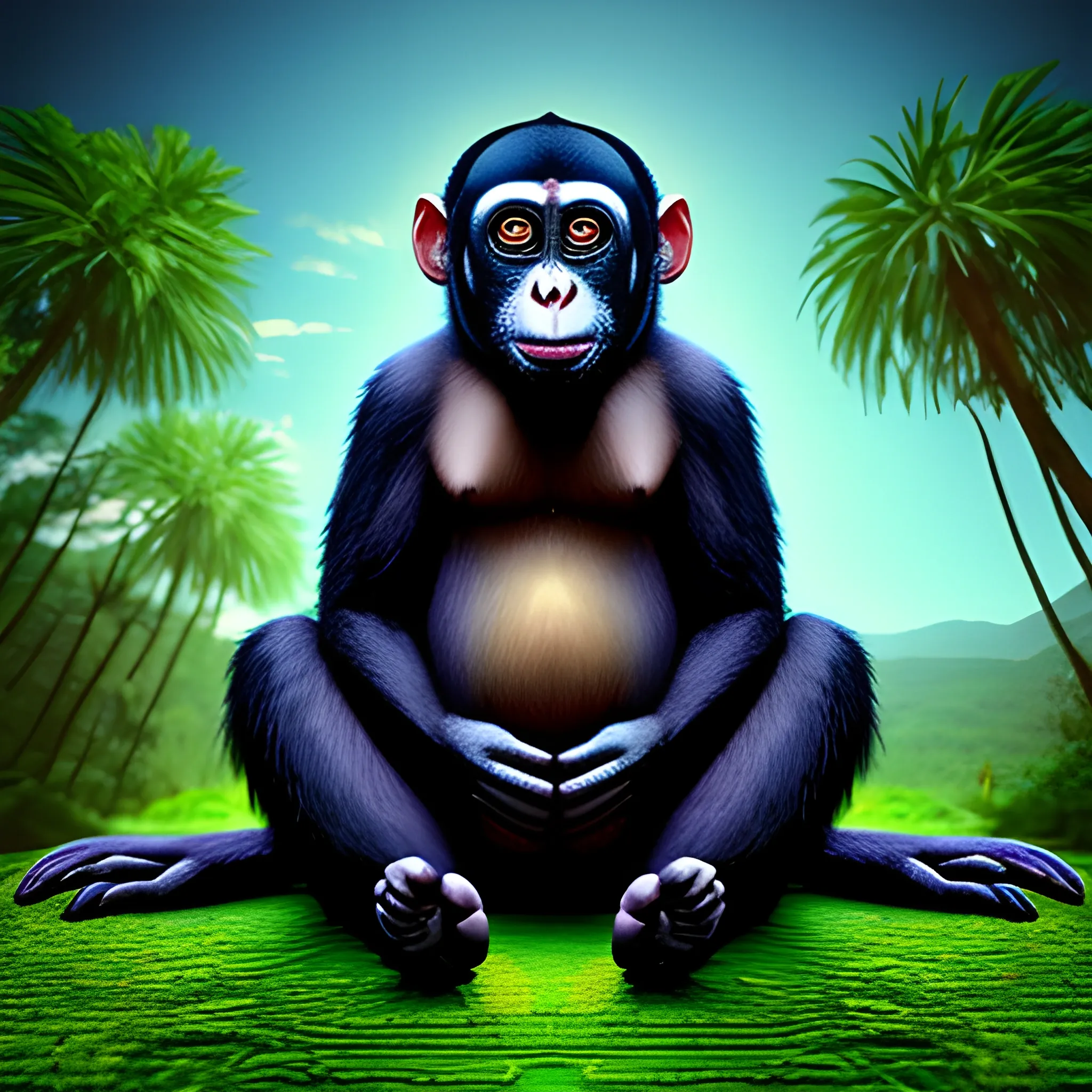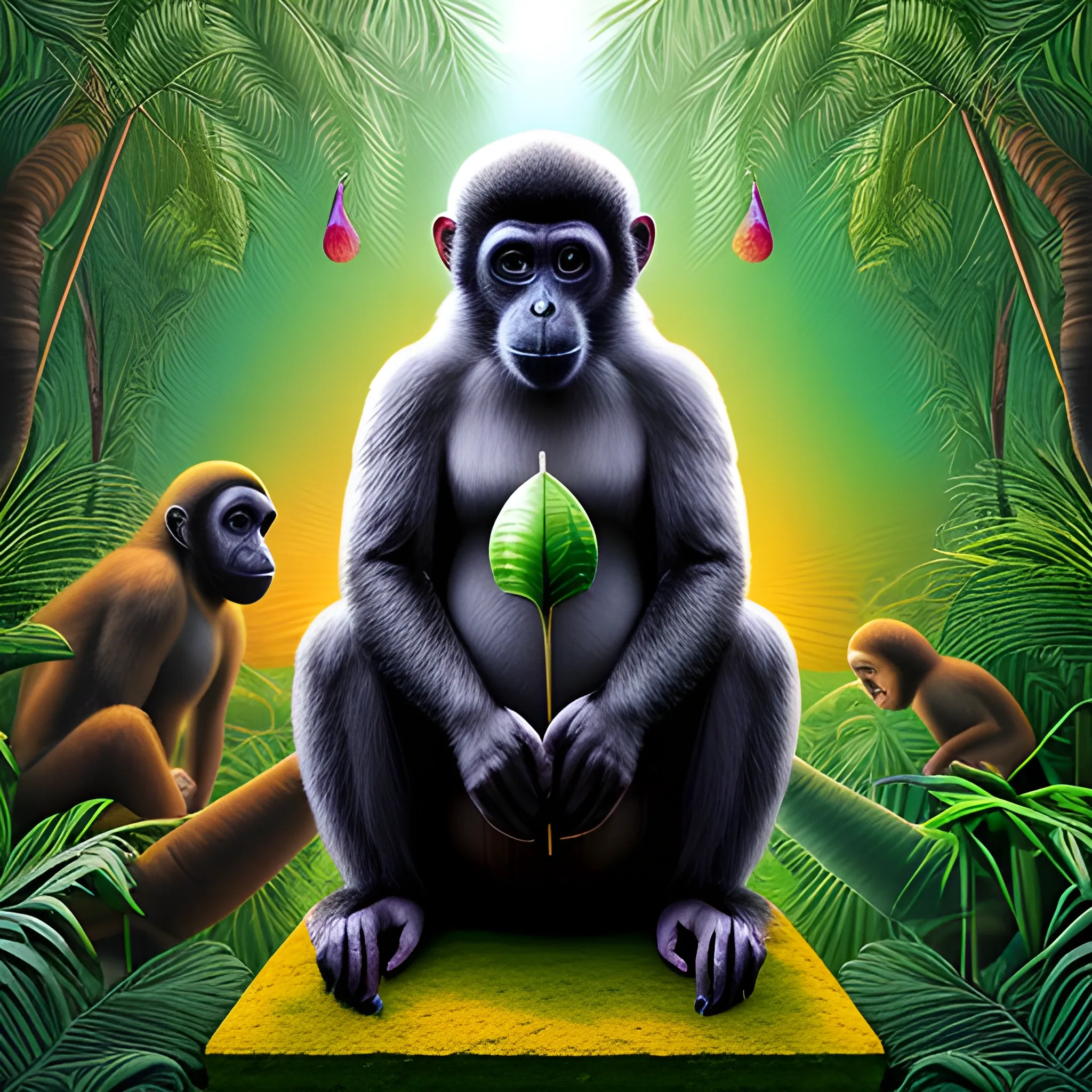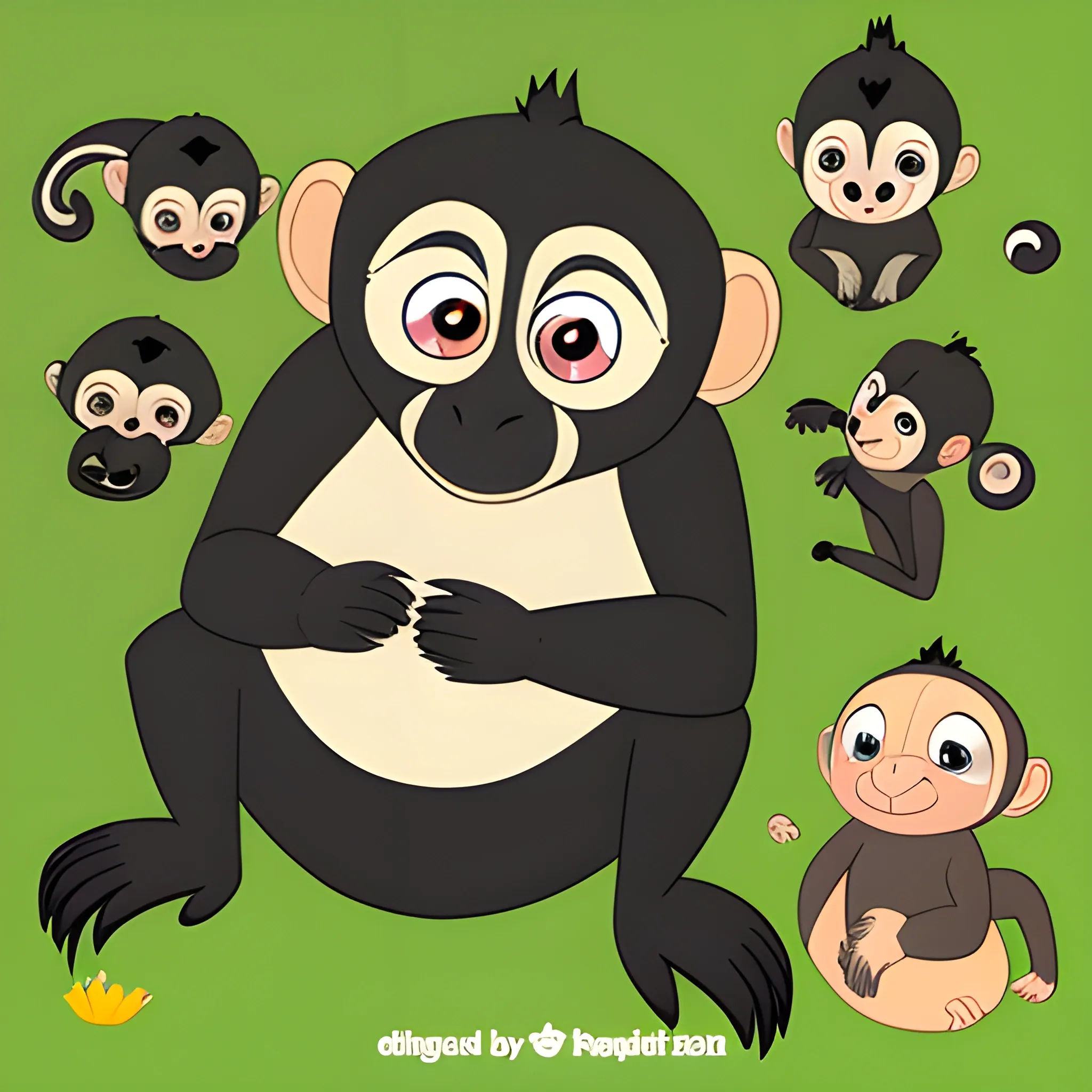AI Image Prompts for Primate
Explore AI generated designs, images, art and prompts by top community artists and designers.

symmetry!! ultra realistic portrait of primates! cover art! moon and galaxy in background! , cottagecore!! , hannah owo face , last exile anime , shiny background , chiaroscuro , Makoto Shinkai and Lois van baarle , moon in background , standing on a bridge during sunset , ornamentation , isometric illustration by chihiro iwasaki , feng zhu , creary , immersed within a glitch network , 4k digital masterpiece by Anna Dittman and Alberto Seveso Ruan Jia , trending on Artstation. splattered cartoon art. ,
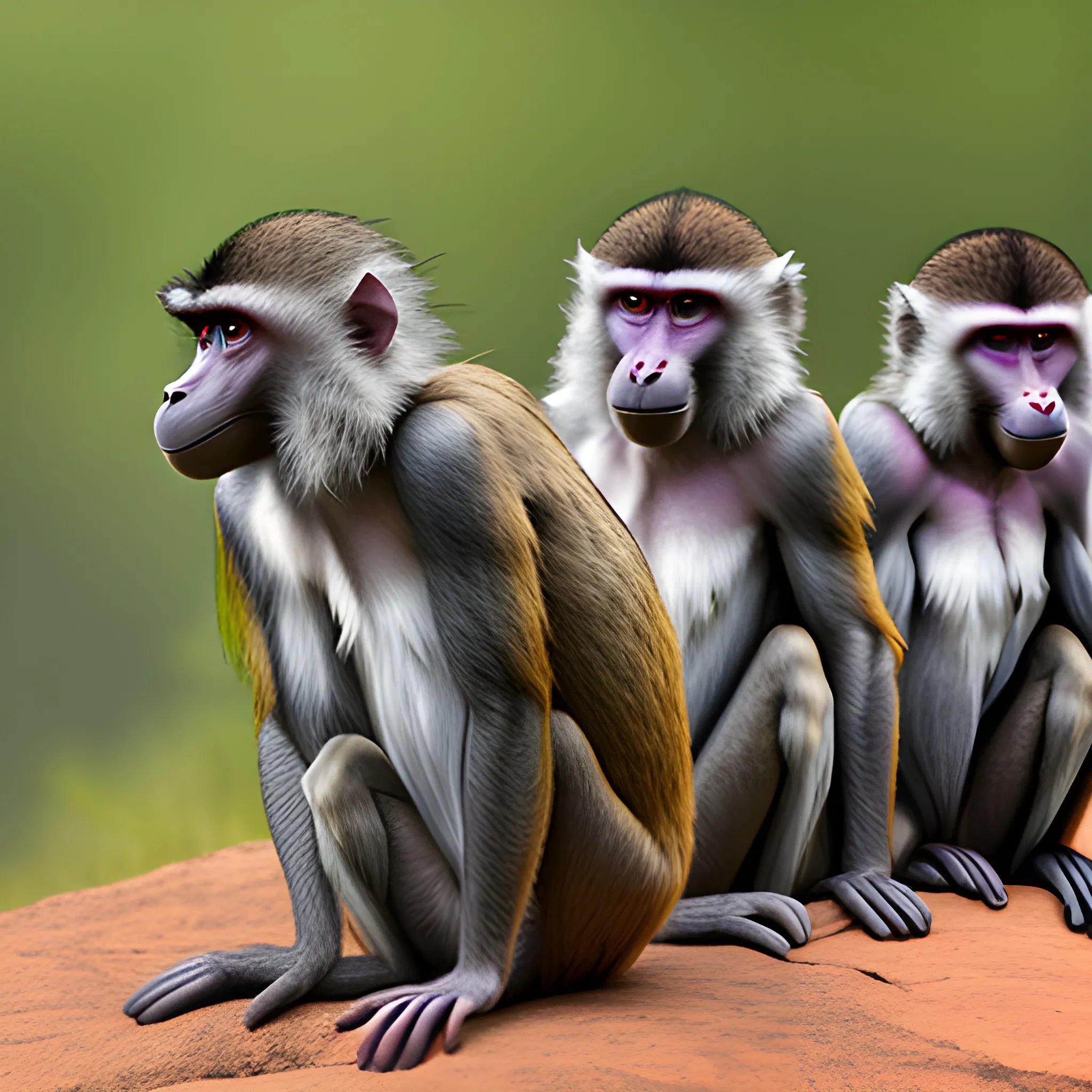
Appearance: The Baboon is a medium-sized primate with a distinctive and charismatic appearance. It has a robust and muscular body , covered in short fur that can range in color from brown to gray or even olive-green. Baboons have a dog-like snout , sharp teeth , and a hairless face with prominent cheek pouches , which they use to store food. They have long arms and powerful legs , allowing them to move quickly and with agility. Features: Baboons are highly social creatures , living in close-knit troops that can consist of a few individuals to larger groups. Their intelligence and adaptability enable them to survive in various environments , from lush jungles to arid savannahs. They are known for their strong social hierarchy and complex communication , using vocalizations , gestures , and facial expressions to convey emotions and intentions. Habitat: Baboons are versatile animals that can thrive in a range of habitats , including forests , grasslands , and mountainous regions. They are often found near water sources , as they require regular access to drinking water. In your DND world , baboons might inhabit areas with lush vegetation or live in proximity to humanoid settlements , scavenging for food scraps. Behavior: Baboons are opportunistic omnivores , with a varied diet that includes fruits , leaves , seeds , insects , and small animals. They are skilled climbers and can use their agility to escape predators or reach high-up food sources. Baboons are known for their playfulness , engaging in social interactions , grooming , and even games with each other. Role in the World: In your DND world , baboons could serve as a part of the natural ecosystem or be associated with certain deities or nature spirits. Druids and rangers might have a special connection with baboons , viewing them as symbols of adaptability and community. Encountering baboons in the wild could present various opportunities for adventurers. They might have non-combat interactions with the primates , such as observing their social behaviors or using animal handling skills to communicate with them. Baboons could also play a role in quests involving local tribes or settlements , where their presence might be considered either beneficial or problematic depending on the circumstances. While not inherently aggressive , baboons can defend themselves and their troop if they feel threatened , making it essential for adventurers to approach them with respect and caution. ,
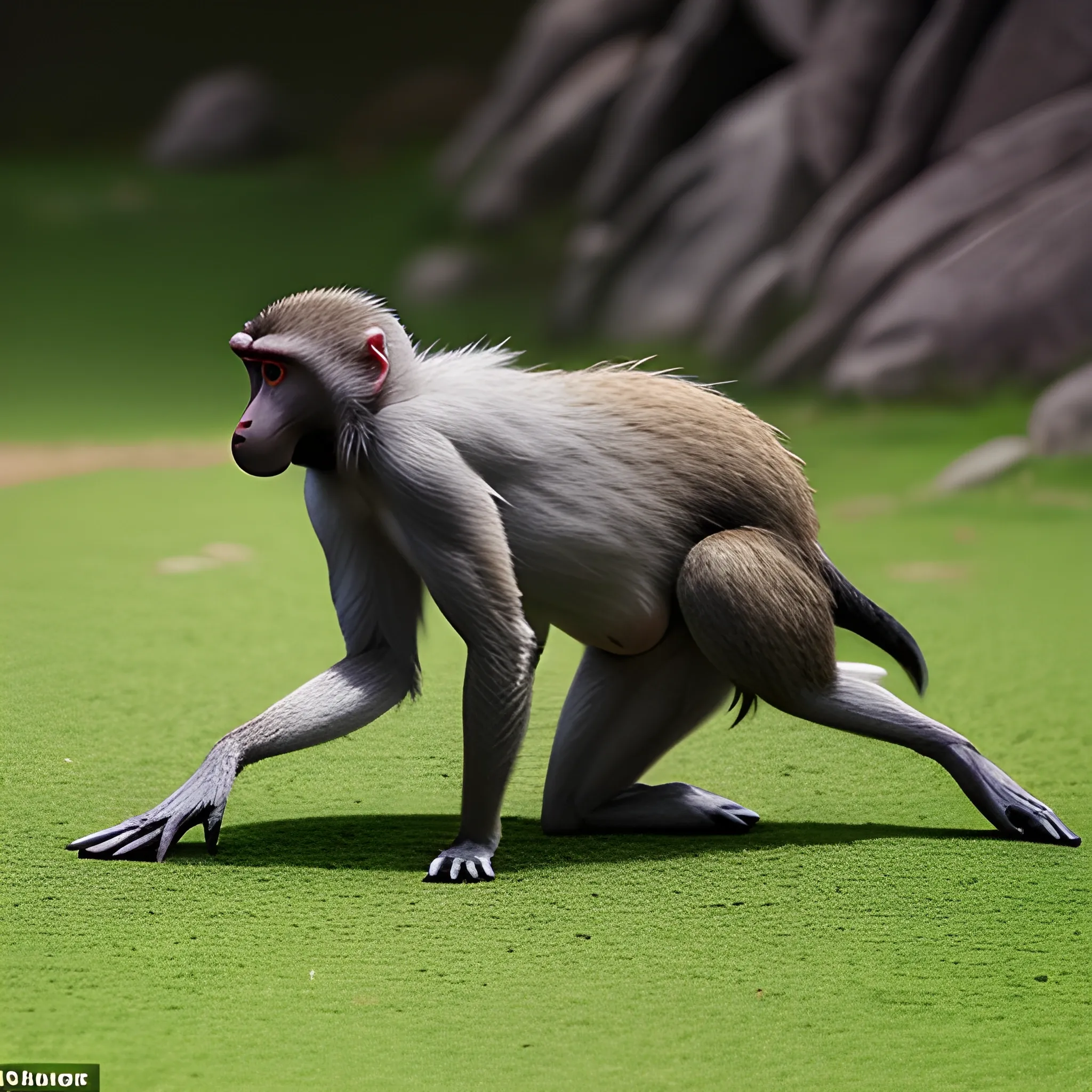
Appearance: The Baboon is a medium-sized primate with a distinctive and charismatic appearance. It has a robust and muscular body , covered in short fur that can range in color from brown to gray or even olive-green. Baboons have a dog-like snout , sharp teeth , and a hairless face with prominent cheek pouches , which they use to store food. They have long arms and powerful legs , allowing them to move quickly and with agility. Features: Baboons are highly social creatures , living in close-knit troops that can consist of a few individuals to larger groups. Their intelligence and adaptability enable them to survive in various environments , from lush jungles to arid savannahs. They are known for their strong social hierarchy and complex communication , using vocalizations , gestures , and facial expressions to convey emotions and intentions. Habitat: Baboons are versatile animals that can thrive in a range of habitats , including forests , grasslands , and mountainous regions. They are often found near water sources , as they require regular access to drinking water. In your DND world , baboons might inhabit areas with lush vegetation or live in proximity to humanoid settlements , scavenging for food scraps. Behavior: Baboons are opportunistic omnivores , with a varied diet that includes fruits , leaves , seeds , insects , and small animals. They are skilled climbers and can use their agility to escape predators or reach high-up food sources. Baboons are known for their playfulness , engaging in social interactions , grooming , and even games with each other. Role in the World: In your DND world , baboons could serve as a part of the natural ecosystem or be associated with certain deities or nature spirits. Druids and rangers might have a special connection with baboons , viewing them as symbols of adaptability and community. Encountering baboons in the wild could present various opportunities for adventurers. They might have non-combat interactions with the primates , such as observing their social behaviors or using animal handling skills to communicate with them. Baboons could also play a role in quests involving local tribes or settlements , where their presence might be considered either beneficial or problematic depending on the circumstances. While not inherently aggressive , baboons can defend themselves and their troop if they feel threatened , making it essential for adventurers to approach them with respect and caution. ,
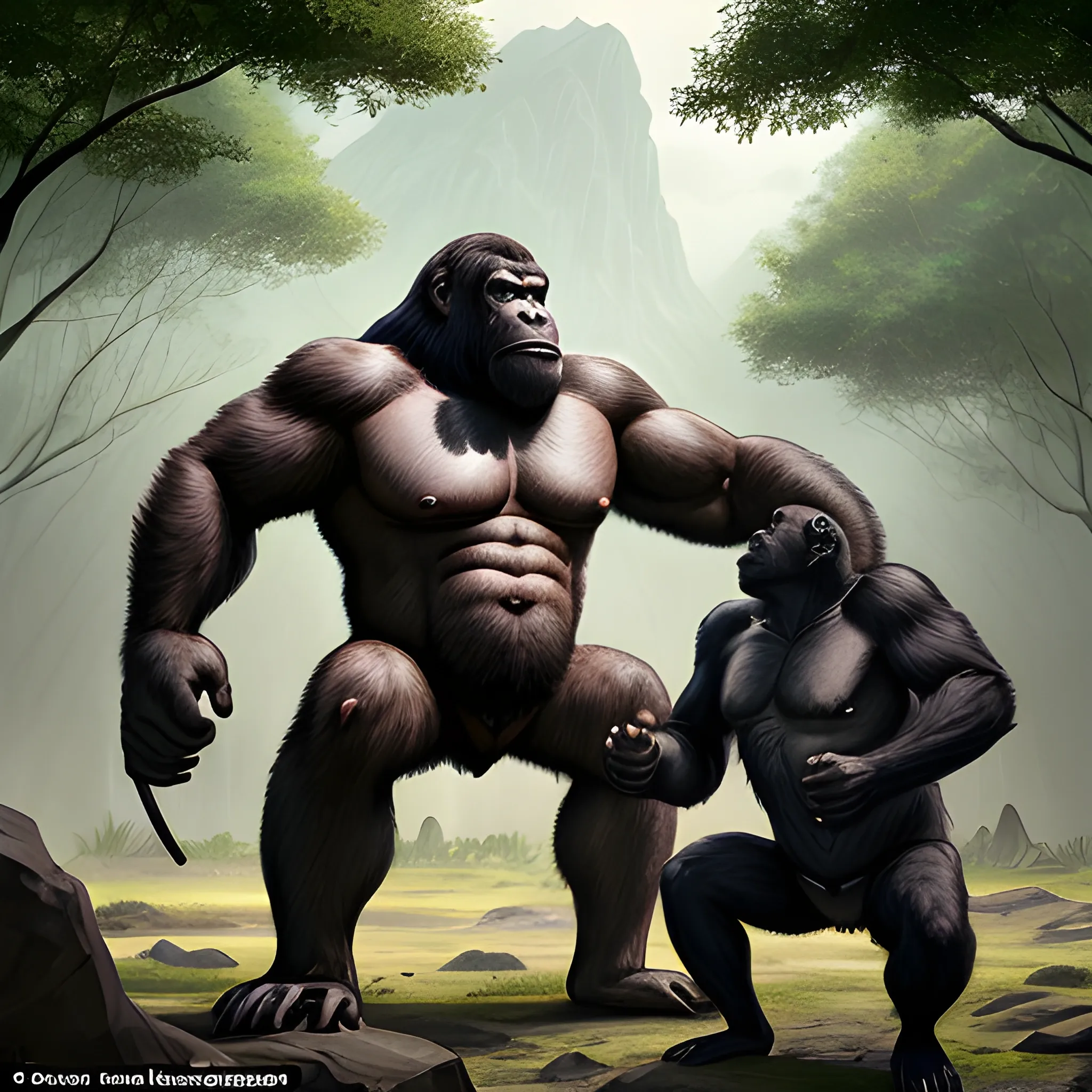
Appearance: The Strong-Looking Ape is a large and imposing primate , exuding raw strength and power in its every movement. It has a robust and muscular body covered in coarse , dark fur , which can range from black to deep brown or reddish hues. Its shoulders are broad and powerful , and its arms are long and muscular , capable of delivering devastating blows. The Strong-Looking Ape's face is expressive , with intelligent eyes that convey both curiosity and a hint of primal ferocity. Features: The Strong-Looking Ape is a formidable creature , possessing incredible physical strength and agility. Its powerful arms allow it to swing through trees with ease , making it a skilled climber and acrobat. In addition to its raw physical power , the Strong-Looking Ape's thick fur offers protection against environmental elements and minor injuries. Habitat: Strong-Looking Apes are typically found in dense jungles , vast forests , and remote mountainous regions. They are highly adaptable creatures , capable of surviving in a variety of environments. In your DND world , they might inhabit hidden valleys or ancient ruins , guarding sacred territories or serving as protectors of natural wonders. Behavior: While the Strong-Looking Ape is an intelligent creature , it primarily relies on its physical prowess to navigate its surroundings and interact with others. It lives in social groups or troops , exhibiting complex communication through vocalizations , body language , and gestures. While generally non-aggressive toward other creatures , the Strong-Looking Ape fiercely defends its territory and family from perceived threats. Role in the World: In your DND world , Strong-Looking Apes could be seen as noble creatures embodying the untamed spirit of nature. Druids and rangers might have a special connection with these primates , viewing them as symbols of strength , adaptability , and primal wisdom. Encountering a Strong-Looking Ape in the wild can be a captivating and potentially dangerous experience for adventurers. Players may witness the ape's impressive physical abilities as it swings effortlessly through the trees or engages in playful displays with other members of its troop. While generally non-aggressive , provoking or threatening a Strong-Looking Ape or its family could lead to a fierce defense , forcing players to use diplomacy or demonstrate respect for the creatures' territory. The presence of Strong-Looking Apes in your campaign adds an element of mystery and awe to the wilderness. Players might encounter these intelligent and powerful creatures during their explorations , offering opportunities for unique and memorable interactions. Strong-Looking Apes can serve as guardians of ancient sites , allies to druids seeking to protect the natural world , or even opponents in thrilling feats of strength and agility. Their presence in your DND world contributes to the rich tapestry of wildlife and brings a sense of wonder to the untamed corners of your campaign setting. ,

